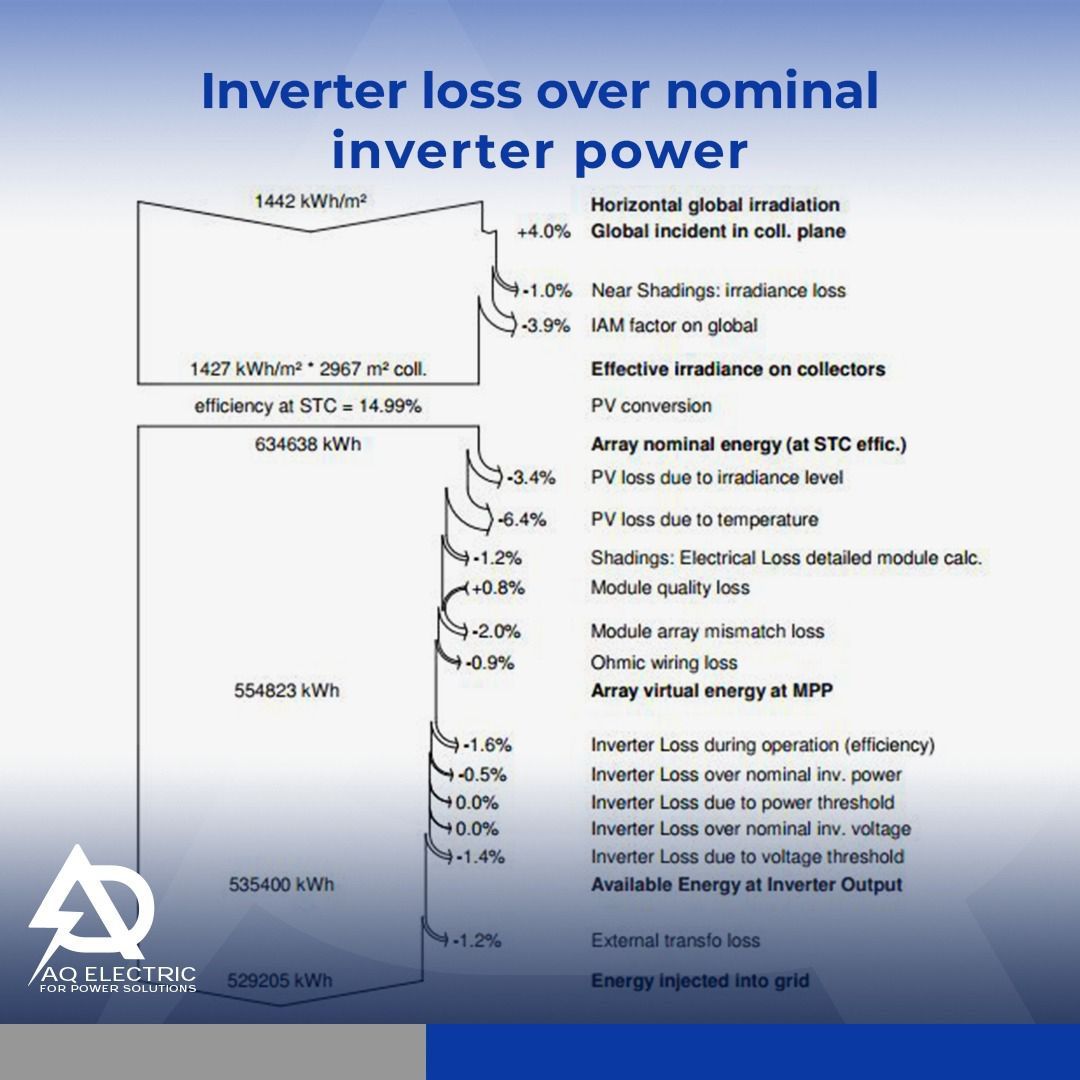When it comes to photovoltaic (PV) systems, one of the challenges often faced is over-nominal power losses in inverters. But what does this mean, and how can we manage it effectively.
What Are Over-Nominal Power Losses?
Inverters are the heart of a PV system, converting DC power from solar panels into usable AC power. However, when the power from the PV array exceeds the inverter’s rated capacity, power clipping occurs. This means the inverter discards the excess power, leading to over-nominal power losses.
What Causes These Losses?
1. Oversizing the PV Array
Many PV systems are designed with a DC-AC ratio > 1. For example, 140% leads to possible power clipping on sunny days.
2.High Solar Irradiance
During peak sunlight hours, especially in summer, panels may produce more power than the inverter can handle.
3. Temperature Effects
Cooler temperatures enhance PV module efficiency, potentially increasing output beyond nominal values.
How Do These Losses Impact the System?
• Energy Clipping: The inverter caps its output at its rated capacity, causing some energy to be lost.
• Efficiency Consideration: While clipping reduces potential energy yield, inverters operate most efficiently near their rated capacity.
How to Mitigate Over-Nominal Power Losses?
1. Smart Sizing
Select a DC-AC ratio that balances yearly energy yield and economic returns.
2. Advanced Inverters
Modern inverters can dynamically manage power for better performance and grid compliance.
3. Energy Storage
Install batteries to store excess energy instead of letting it go to waste.
While over-nominal power losses are unavoidable in oversized systems, careful planning and advanced technologies can minimize these losses and optimize your PV system’s performance over its lifetime.
For more information and requests you can reach us,,
– Email: Aqatawneh@aqelectric.net
– Mobile: +201151006630
+962795154126

